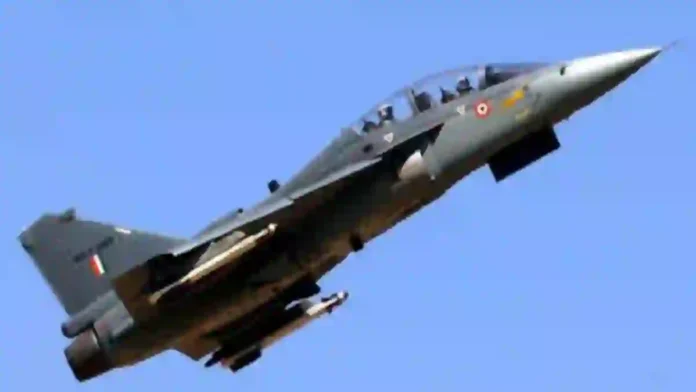New Delhi: The defence ministry has issued a tender to state-run plane maker Hindustan Aeronautics Limited for the proposed acquisition of 97 light combat aircraft (TEJAS MK-1A) to strengthen IAF’s capabilities at a time the force is grappling with a shortage of fighter squadrons, officials aware of the matter said on Friday.
The new fighter planes are expected to cost around ₹67,000 crore, the officials said asking not to be named.
The development comes around four months after the defence acquisition council (DAC), headed by defence minister Rajnath Singh, accorded its acceptance of necessity (AoN) for more TEJAS MK-1A fighters. AoN by the council is the first step towards buying weapons and systems under India’s procurement rules.
The contract in the pipeline will be the second one as IAF ordered 83 TEJAS MK-1A fighters for ₹48,000 crore in February 2021. The first of these 83 fighters was to be delivered to IAF by March 31 but the delivery has been delayed as key certifications are still pending, as first reported by HT on March 25.
On March 28, the first TEJAS MK-1A aircraft made its maiden flight from an HAL facility in Bengaluru. The 83 fighters already ordered are expected to be delivered by 2028.
HAL has set up a new production line in Nashik for TEJAS MK-1A to meet IAF’s growing requirements for fighter jets. It can build 16 TEJAS MK-1As every year in Bangalore, and the Nashik line will help HAL ramp up production to 24 jets.
TEJAS MK-1A is an advanced variant of the TEJAS MK-1, which has already been inducted by IAF. TEJAS is set to emerge as the cornerstone of IAF’s combat power in the coming decade and beyond, as previously reported by HT. IAF, the world’s fourth largest air force, is expected to operate around 350 TEJASs (MK-1, MK-1A and MK-2 versions), with a third of those already ordered, some inducted, and the rest figuring prominently on the air force’s modernisation roadmap and expected to be contracted in the coming years.
Read- GAGAN SHAKTI DONE, TARANG SHAKTI NEXT: A LOOK AT THE VARIOUS IAF DRILLS & HOW THEY HELP
The proposal to buy more TEJAS MK-1As is moving ahead as planned and will provide a big boost to ‘Atmanirbharta’ (self-reliance) in the defence manufacturing sector, said Air Vice Marshal Anil Golani (Retd), director general, Centre for Air Power Studies.
“Timely deliveries of TEJAS MK-1A will be of essence. The focus will also now be on how the TEJAS MK-2 project progresses and developments related to the advanced medium combat aircraft (AMCA),” he added.
Last November, Prime Minister Narendra Modi flew in TEJAS MK-1 trainer, with his sortie being seen as a significant endorsement of the indigenous fighter program.
The aircraft was part of an earlier order for 40 MK-1 jets in the initial operational clearance (IOC) and the more advanced final operational clearance (FOC) configurations — the first variants of TEJAS. Of the 40 MK-1s, IAF has inducted 32 single seater jets and raised two squadrons, while the eight trainers are being inducted.
The newer variants, MK-1A and the under-development Mk-2, will come with significantly improved features and technologies compared to the MK-1 aircraft.
One of the 32 TEJAS MK-1s inducted crashed near Jaisalmer on March 12, minutes after taking part in a tri-services exercise that sought to demonstrate the strides India has made towards self-reliance in the defence manufacturing sector. That was the first TEJAS crash. The aircraft had flown during the tri-services Bharat Shakti exercise at the Pokhran range along with another TEJAS fighter before it went down.
Last year, HAL and US engine maker General Electric signed an MoU for transfer of technology (ToT) and manufacturing of F414 aero-engines in India for TEJAS MK-2. The upcoming deal will involve 80% ToT and is estimated to be worth around $1 billion. The F414 has evolved from the F404 engine that powers the existing MK-1 and MK-1A variants and is imported from the US. The local production of the F414 engines will result in the MK-2 jets having an indigenous content of 75% compared to 60% in MK-1A and 50% in MK-1.
The MK-1A fighter will come with digital radar warning receivers, external self-protection jammer pods, superior radar, advanced beyond-visual-range (BVR) air-to-air missiles and significantly improved maintainability.
TEJAS MK-2 will be equipped with better avionics and electronics, carry a higher weapons payload, have improved range, enhanced survivability, better situational awareness for pilots, and the ability to quickly switch from one role to another.
In March, the PM-headed Cabinet Committee on Security (CCS) approved a highly anticipated project for the design and prototype development of an indigenous fifth-generation stealth fighter, or AMCA, at a cost of around ₹15,000 crore. The project will involve the design and development of five twin-engine AMCA prototypes, with the stealth fighter likely to go into production only after a decade.
IAF’s modernisation map envisages the deployment of around 120 stealth fighters 2035 onwards.
(With Agency Inputs)




